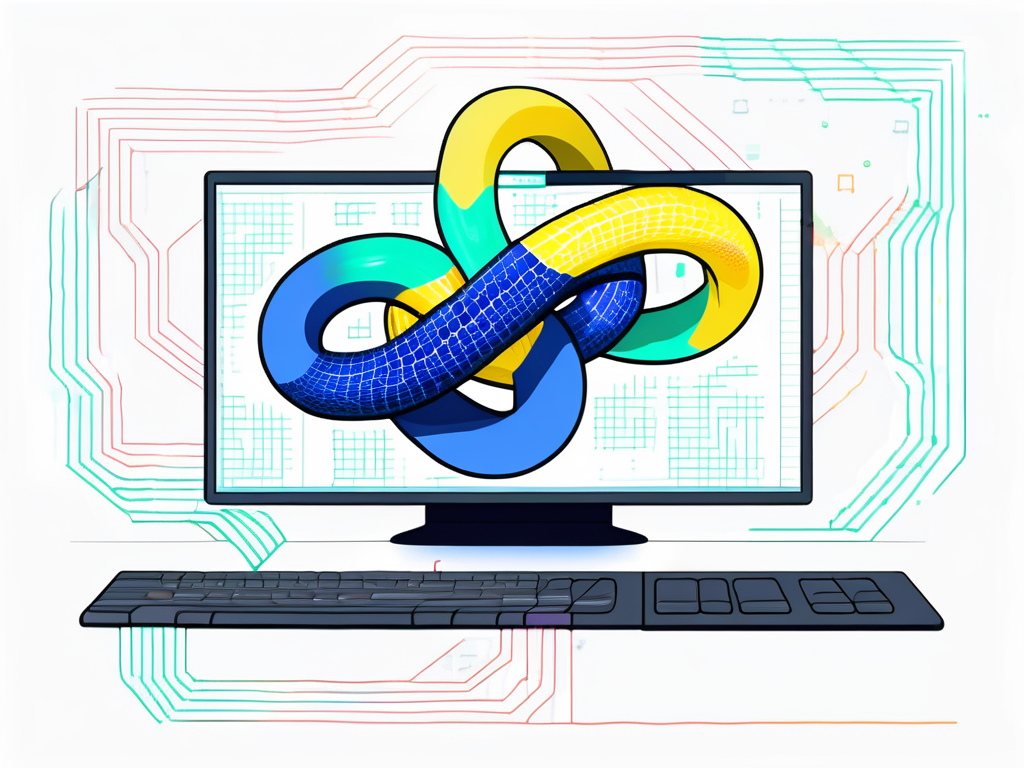Your cart is currently empty!
What is Git: Python For AI Explained
Author:
Published:
Updated:

Git is a distributed version control system that is widely used in the field of software development, including Python for Artificial Intelligence (AI). It allows multiple developers to work on the same project simultaneously, without overwriting each other’s changes. Git tracks changes made to a project, stores them in a repository, and allows developers to revert back to previous versions of the project if needed. In the context of Python for AI, Git is an essential tool for managing and versioning AI models and algorithms.
Python is a high-level, interpreted programming language that is known for its simplicity and readability. It has a wide range of applications, including web development, data analysis, machine learning, and AI. Python’s simplicity and powerful libraries, such as NumPy, Pandas, and TensorFlow, make it a popular choice for AI development. In this article, we will explore how Git is used in Python for AI, and how it can enhance the efficiency and effectiveness of AI development.
Understanding Git
Git is a distributed version control system, which means that every developer working on a project has a complete copy of the project’s history on their local machine. This allows developers to work offline and makes it easy to branch and merge code. Git uses a snapshot-based system to track changes, rather than a file-based system. This means that Git takes a snapshot of the project every time a change is committed, and stores a reference to that snapshot. If files have not changed, Git doesn’t store the file again—just a link to the previous identical file it has already stored.
Git was created by Linus Torvalds, the creator of Linux, in 2005. It was developed to help manage the development of the Linux kernel, a project that involves thousands of developers around the world. Today, Git is used by millions of developers and is the standard version control system for open source projects.
Git Workflow
The Git workflow consists of four fundamental stages: Working Directory, Staging Area, Local Repository, and Remote Repository. The Working Directory is where you make changes to your files. The Staging Area is a place where you can stage your changes before committing them to the Local Repository. The Local Repository is where Git stores the snapshots it takes whenever you commit a change. The Remote Repository is a copy of your Local Repository hosted on a server on the internet. This is where you push your changes so that others can access them.
Git’s distributed nature means that you can work on your own branch without affecting the main project. Once you’re happy with your changes, you can merge your branch into the main branch. This makes Git a powerful tool for collaborative development.
Git Commands
There are several basic Git commands that every developer should know. These include ‘git init’ to initialize a new Git repository, ‘git clone’ to copy a Git repository from a remote server, ‘git add’ to add a file to the Staging Area, ‘git commit’ to save your changes to the Local Repository, ‘git push’ to upload your changes to the Remote Repository, and ‘git pull’ to update your Local Repository with the latest changes from the Remote Repository.
Other important commands include ‘git status’ to check the status of your files, ‘git diff’ to see what changes have been made, ‘git log’ to view the commit history, ‘git branch’ to manage branches, and ‘git merge’ to merge branches. Understanding these commands is crucial for using Git effectively.
Python for AI
Python is one of the most popular languages for AI development due to its simplicity, flexibility, and the availability of powerful libraries for AI and machine learning. Python’s syntax is clear and intuitive, which makes it a great language for beginners. It’s also dynamic and interpreted, which means that you can test your code as soon as you write it, without having to compile it first.
Python’s powerful libraries, such as NumPy for numerical computation, Pandas for data manipulation, Matplotlib for data visualization, and TensorFlow and PyTorch for machine learning, make it a versatile tool for AI development. These libraries provide pre-written code for complex mathematical operations, data processing tasks, machine learning algorithms, and more, which can significantly speed up the development process.
Python and Machine Learning
Machine learning is a subset of AI that involves the development of algorithms that can learn from and make predictions based on data. Python is widely used in machine learning due to its simplicity and the availability of powerful machine learning libraries, such as Scikit-learn, TensorFlow, and PyTorch. These libraries provide pre-written code for a wide range of machine learning algorithms, including regression, classification, clustering, and deep learning.
For example, using Python and Scikit-learn, you can train a logistic regression model with just a few lines of code. You can also use TensorFlow to build and train complex neural networks for deep learning. Python’s simplicity and the power of these libraries make it a great tool for machine learning development.
Python and Deep Learning
Deep learning is a subset of machine learning that involves the use of neural networks with many layers. These deep neural networks are capable of learning complex patterns from large amounts of data, which makes them particularly useful for tasks such as image recognition, speech recognition, and natural language processing.
Python is a popular language for deep learning due to the availability of powerful deep learning libraries, such as TensorFlow and PyTorch. These libraries provide pre-written code for building and training deep neural networks, which can significantly speed up the development process. For example, using Python and TensorFlow, you can build and train a convolutional neural network for image recognition with just a few lines of code.
Git and Python for AI
Git is an essential tool for managing and versioning Python code for AI. It allows multiple developers to work on the same AI project simultaneously, without overwriting each other’s changes. Git also allows developers to revert back to previous versions of the project if something goes wrong, which can be a lifesaver in AI development where the development process can be complex and error-prone.

For example, suppose you’re working on a team developing a machine learning model for predicting stock prices. You’re working on a feature for preprocessing the stock price data, while your teammate is working on a feature for training the machine learning model. Using Git, you can both work on your features in your own branches, without affecting each other’s work. Once you’re both done, you can merge your branches into the main branch. If something goes wrong, you can easily revert back to a previous version of the project.
Versioning AI Models with Git
Git can also be used to version AI models. This is important because the performance of AI models can vary depending on the data they’re trained on and the parameters used during training. By versioning your AI models with Git, you can keep track of which versions of your models perform best, and easily revert back to those versions if needed.
For example, suppose you’re training a deep learning model for image recognition. You train your model on a dataset of images, and achieve a certain level of accuracy. Then you decide to try training your model on a different dataset, or with different parameters, to see if you can improve the accuracy. By versioning your model with Git, you can easily switch back to the previous version of your model if the new version performs worse.
Collaborating on AI Projects with Git
Git is also a powerful tool for collaborating on AI projects. It allows multiple developers to work on the same project simultaneously, without overwriting each other’s changes. This is crucial in AI development, where projects can be complex and require the expertise of multiple developers.
For example, suppose you’re working on a team developing a machine learning model for predicting stock prices. One developer might be responsible for preprocessing the stock price data, another might be responsible for training the machine learning model, and another might be responsible for evaluating the model’s performance. Using Git, each developer can work on their part of the project in their own branch, without affecting the work of the other developers. Once each developer is done with their part, they can merge their branch into the main branch.
Looking for inspiration 📖
- Sam Altman’s secrets on how to generate ideas for any business
- 6 Greg Brockman Secrets on How to Learn Anything – blog
- The secrets behind the success of Mira Murati – finally revealed
- Ideas to Make Money with ChatGPT (with prompts)
- Ilya Sutskever and his AI passion: 7 Deep Dives into his mind
- The “secret” Sam Altman blog post that will change your life
- 4 Life-Changing Lessons we can learn from John McCarthy – one of AI’s Founding Fathers
- Decoding Elon Musk: 5 Insights Into His Personality Type Through Real-Life Examples
Conclusion
In conclusion, Git is a powerful tool for managing and versioning Python code for AI. It allows multiple developers to work on the same project simultaneously, without overwriting each other’s changes. It also allows developers to revert back to previous versions of the project if something goes wrong. Python is a popular language for AI development due to its simplicity and the availability of powerful libraries for AI and machine learning. Together, Git and Python provide a powerful platform for AI development.
Whether you’re a beginner just starting out with Python and AI, or an experienced developer looking to improve your workflow, understanding how to use Git with Python for AI can enhance your efficiency and effectiveness as a developer. So start experimenting with Git and Python for AI today, and see how they can enhance your AI development process.


